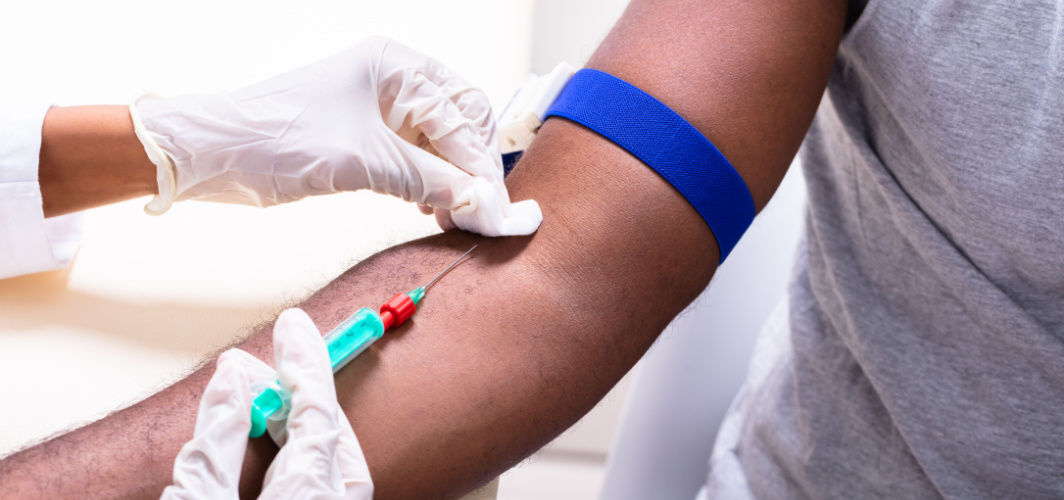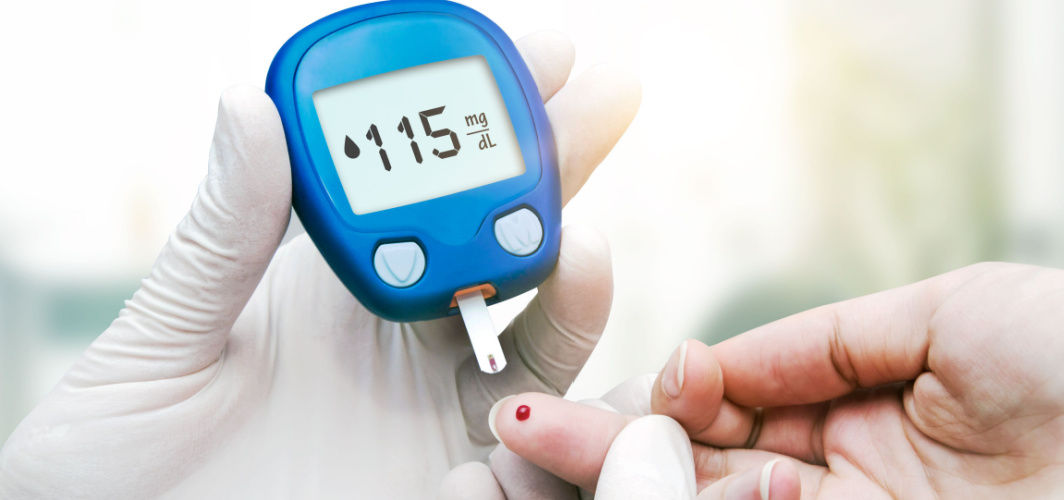Diabetes Management
Top 4 Tests For Diabetes Diagnosis
6 min read
By Apollo 24|7, Published on - 27 June 2023, Updated on - 05 September 2023
Share this article
0
0 like

According to the World Health Organisation, about 422 million people worldwide are affected by diabetes as of 2023. Moreover, close to 1.5 million deaths are caused by this debilitating disease each year. Thus, it's crucial that you take a proactive step for yourself and your loved ones and get diabetes tests done as soon as you experience diabetes symptoms. Keep reading to know more.
Who Should Get Their Diabetes Test Done?
Ideally, diabetes screening should be conducted for all individuals above 30 years of age. Besides that, anyone with one or more of the following complications must get their diabetes test done. Those:
- With a family history of diabetes
- On hypertension treatment or having a history of hypertension (≥130/80 mmHg)
- Who are overweight and obese individuals with BMI ≥23 kg/m2 ( >80 cm females, >90 cm males)
- Who are leading or have been leading a sedentary lifestyle with hardly any physical activity
- With a history of dyslipidemia
- Suffering from ischaemic heart disease and cerebrovascular disease
- With a history of gestational diabetes or macrosomia, indicated by a birth weight of more than 3.5kg
- With a medical history of acanthosis nigricans and/or polycystic ovarian syndrome
Tests for Diagnosing Diabetes
The Haemoglobin A1c (HbA1c) and Oral Glucose Tolerance Test (OGTT) are two of the most common tests for diagnosing diabetes mellitus. The other 2 are the Fasting Plasma Glucose test and the random blood sugar test. Check out the test preparations, results and diagnosis interpretation.
1. Haemoglobin A1c (HbA1c) Test
Preparation of test: This test helps measure the patient’s average blood glucose level for the past 2-3 months. Also called glycated haemoglobin test, this is a rather simple blood test that doesn’t require you to fast. You can take the test amidst your normal routine.
Test results and how to read:
Diagnosis of diabetes is confirmed if the A1c level is greater than or equal to 6.5%.
A1c Level |
Result |
|
Greater than or equal to 6.5% |
Diabetes |
|
Lesser than 5.7% |
Normal |
|
5.7% - 6.4% |
Prediabetes |
2. Oral Glucose Tolerance Test (OGTT)
Preparation of test: This is a 2-hour test that essentially assesses the patient’s blood glucose level before they ingest a medically approved sweet drink and then 2 hours after. The OGTT diagnostic test helps understand how the body processes sugar. It is also referred to as the postprandial glucose test, wherein postprandial refers to ‘after a meal’.
Test result and how to read:
OGTT Level |
Result |
|
Greater than or equal to 200 mg/dl |
Diabetes |
|
Lesser than 140 mg/dl |
Normal |
|
140 to 199 mg/dl |
Prediabetes |
3. Fasting Plasma Glucose Test
Preparation of test: Another extensively used diagnostic approach is the Fasting Plasma Glucose (FPG) test or the Fasting Blood Glucose test. It is performed during the morning, therefore people taking the test are advised to not ingest anything except water 8-10 hours before the test.
Test result and how to read:
FPG Level |
Result |
|
Greater than or equal to 126 mg/dl |
Diabetes |
|
Lesser than 100 mg/dl |
Normal |
|
100 to 125 mg/dl |
Prediabetes |
4. Random Blood Sugar Test
Preparation of test: This test checks for your blood sugar level at the time of testing. You do not need to fast for this test, and it can be taken at any time.
Test results and how to read:
Random Blood Sugar Level |
Result |
|
Greater than 200 mg/dl |
Diabetes |
3 Different Approved Standard Criteria for Diagnosing Diabetes
Type 2 diabetes is the most common type of diabetes, where the body exhibits insulin resistance and is unable to use insulin well. Whereas, in type 1 diabetes, also referred to as juvenile diabetes and insulin-dependent diabetes, the body is unable to produce enough insulin.
Both these conditions along with prediabetes and gestational diabetes are serious and can have chronic effects and, thus, must be diagnosed on time. Discussed below are the various approved criteria for diagnosing standard diabetes.
1. American Diabetes Association (ADA) Criteria
The American Diabetes Association released the diagnostic criteria for diabetes for the first time in 1997 and keeps updating them from time to time. Given below are updated standard diagnostic criteria from ADA:
- Haemoglobin A1c (HbA1c) is more than or equal to (≥) 6.5%
- 2-hour Plasma glucose ≥ 200 mg/dL during an oral glucose tolerance test (OGTT)
- Fasting Blood Glucose ≥ 126 mg/dL
- For patients suffering from hyperglycaemic crisis, random blood glucose ≥ 200 mg/dL
2. World Health Organisation (WHO) Criteria
The World Health Organisation (WHO) criteria for diabetes diagnosis have been released since 1965, and given below are the most recently updated standard:
- Fasting Blood Glucose concentration ≥ 126 mg/dL
- A random venous plasma glucose concentration ≥ 200 mg/dL
- 2-hour blood glucose concentration ≥ 200 mg/dL two hours later in the oral glucose tolerance test (OGTT)
3. International Expert Committee (IEC) Criteria
In 2009, the IEC criterion for diagnosing diabetes was set at HbA1c ≥ 6.5%.
Criteria for Diagnosing Gestational Diabetes
A pregnant woman can be diagnosed with diabetes if she shows any of the following readings:
- Fasting Blood Glucose is 100 mg/dL or above
- 2-hour plasma glucose level is 140 mg/dL or above
- HbA1c test standard for diagnosing diabetes
Criteria for Diagnosing Prediabetes
Prediabetes refers to the condition where the blood glucose level is high but not elevated enough to be diagnosed as diabetes. The ADA and WHO criteria for diagnosing prediabetes are as follows:
- Fasting Blood Glucose: 110-125 mg/dL
- HbA1c: 5.7-6.4%
- 2-hour plasma glucose level: 140-199 mg/dL
Takeaway
While the factors contributing to some forms of diabetes are out of your control, the rest can be kept in check with simple lifestyle changes. Regardless, it requires early detection with proper diagnostic tests following the standard criteria. If you know someone displaying tell-tale signs of diabetes, reach out with the necessary guidance and encourage them to get tested, and take proactive measures for yourself as well.
FAQs
Q. What are the symptoms of diabetes?
Some of the most common symptoms of diabetes include weight changes, frequent urination, excessive hunger and thirst.
Q. What are the criteria for GAD diabetes?
Although there are no universal criteria for diagnosing GAD (Glutamic Acid Decarboxylase) diabetes, a subtype of diabetes, three common diagnostic criteria are:
- Individual is older than 35 years of age
- Tested positive for GAD autoantibodies
- From the first 6 months to 1-year post-diagnosis, no need for insulin therapy
Q. What is considered to be normal blood sugar if I have diabetes?
For a diabetic, the normal blood sugar is less than 140 mg/dL. However, people with diabetes should actively take measures to keep their blood sugar level below this reading for a healthier livelihood.
Q. What are the common tests for diabetes diagnosis?
Fasting blood glucose, Haemoglobin A1c (HbA1c), random blood glucose, and oral glucose tolerance test (OGTT) are the four most commonly prescribed tests to diagnose diabetes.
Q. How often should you get diabetes tests done?
Those at risk of developing diabetes should get the test done twice a year, while those with a diagnosis should get diabetes test thrice or as advised by their healthcare provider.
Medically reviewed by Dr Sonia Bhatt.
Diabetes Management
Consult Top Diabetologists
View AllLeave Comment
Recommended for you

Diabetes Management
What is prediabetes and can it be reversed?
Prediabetes is a condition where blood sugar levels are higher than normal but not yet classified as type 2 diabetes. It is a warning sign that diabetes may develop if lifestyle changes are not made. With healthy eating, regular physical activity, and weight loss, prediabetes can often be reversed, returning blood sugar levels to normal and reducing the risk of developing type 2 diabetes.

Diabetes Management
Can Diabetes Worsen Non-Alcoholic Fatty Liver Disease?
In diabetes, insulin resistance disrupts how the body handles sugar and fat, leading to excessive fat storage in the liver, a key factor in non-alcoholic fatty liver disease (NAFLD) development. Obesity, often linked with diabetes, further exacerbates this condition. High blood sugar levels can also directly damage the liver cells, contributing to the risk of liver disease.

Diabetes Management
Type 2 Diabetes: Is It Curable?
Diabetes is a chronic illness in which the body cannot process blood sugar. There are two types of diabetes - type 1 and type 2. Though type 1 diabetes has no cure, you can reverse type 2 with treatment and lifestyle modifications.
Subscribe
Sign up for our free Health Library Daily Newsletter
Get doctor-approved health tips, news, and more.
Visual Stories

8 Fruits That are Incredibly Healthy for Diabetes
Tap to continue exploring
Recommended for you

Diabetes Management
What is prediabetes and can it be reversed?
Prediabetes is a condition where blood sugar levels are higher than normal but not yet classified as type 2 diabetes. It is a warning sign that diabetes may develop if lifestyle changes are not made. With healthy eating, regular physical activity, and weight loss, prediabetes can often be reversed, returning blood sugar levels to normal and reducing the risk of developing type 2 diabetes.

Diabetes Management
Can Diabetes Worsen Non-Alcoholic Fatty Liver Disease?
In diabetes, insulin resistance disrupts how the body handles sugar and fat, leading to excessive fat storage in the liver, a key factor in non-alcoholic fatty liver disease (NAFLD) development. Obesity, often linked with diabetes, further exacerbates this condition. High blood sugar levels can also directly damage the liver cells, contributing to the risk of liver disease.

Diabetes Management
Type 2 Diabetes: Is It Curable?
Diabetes is a chronic illness in which the body cannot process blood sugar. There are two types of diabetes - type 1 and type 2. Though type 1 diabetes has no cure, you can reverse type 2 with treatment and lifestyle modifications.